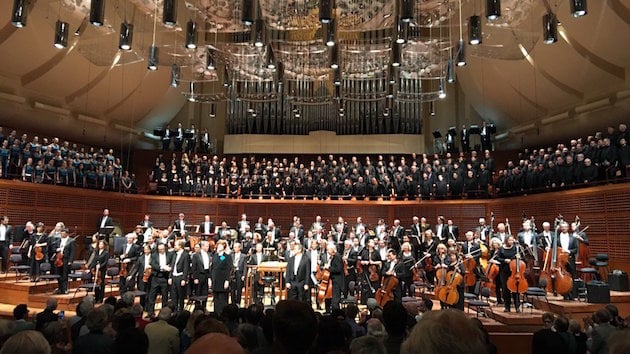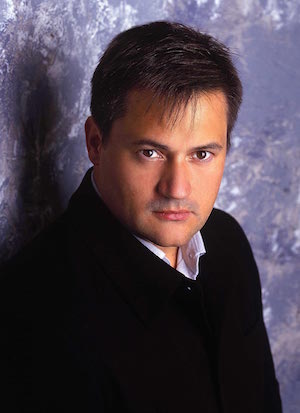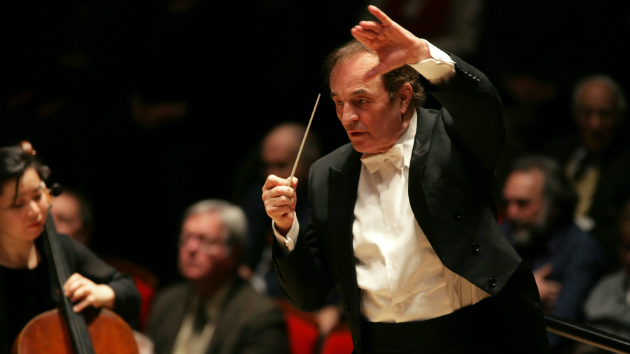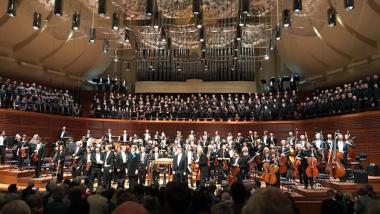
Sometimes it’s personal.
Attending a performance of the Berlioz Requiem following a beloved friend’s afternoon memorial service was bound to touch multiple nerves. And so it did, on Saturday evening, when the San Francisco Symphony, buttressed by three choirs and tenor soloist Paul Groves, gave the last of three performances of this 1837 work at Davies Symphony Hall. In passages both tempestuous and serene, the 80-minute work encompassed the emotions death delivers when it lands so close.

But no listener requires recent and proximate experience to feel the searching emotional range and humanly felt spirituality of Berlioz’s composition. Yes, there are mighty and furious lamentations. Played up to full effect under Charles Dutoit’s baton, the Dies Irae and Lacrymosa sections thundered and enveloped the house. The size and deployment of the orchestral forces — including eight timpani, offstage musicians a la Mahler, and a surround-sound brass choir stationed in four locations high above and around the deck — accounted for part of the outsized effect. So did the tripartite choir, with the San Francisco Symphony Chorus flanked on either side by the Young Women’s Choral Projects of San Francisco and the Golden Gate Men’s Chorus. Over 300 musicians in all were on hand for this CinemaScope undertaking, which was originally slated for March of 2016 and postponed for more than a year.
Yet by evening’s end, in a notably tender if flawed performance, it wasn’t the great eruptions that registered most deeply. Instead it was passages like the softly shining a cappella chords of “Quaerens me,” which captured the hushed supplication of the text: “Seeking me, you sat down weary; you redeemed me, suffering on the cross; let it not have been in vain.” Nearly murmurous in the Bruckner-like spatial realms of the opening, eponymous Requiem section, the choirs seemed to be speaking to themselves in a kind of meditative prayer. How fitting, and beautifully done here, that the “Kyrie eleison” and “Christe eleison” lines should be sung at a near whisper over pointilist pizzicati.
Even when the composer’s large forces were fully engaged, a disarming, almost innocent simplicity would often steal in to define the mood. The Sanctus, which featured Groves in his single, expressively sterling solo, rose to two, emphatic, choral Hosannas, only to give way to the shimmer of cymbals very lightly struck, in the aural equivalent of late, fading light. The entire Requiem ended in a similarly quiescent vein, with all those eight timpani beating out a gentle heartbeat over keening string tremolos in the final section, Agnus Dei.

Dutoit, who sometimes struggled to effect coherence and unity of purpose, pulled it all together in the Lacrymosa, the high point of the evening. Offset by the strings’ piercing melodic shafts, all three choirs came on with shape and heft. The grief was by turns hard-edged and pliant, the collective force suffused with a bittersweet balm. The bass drum, which figured in several important episodes, provided an ominous undertow. The woodwinds checked in with a quizzical, well-voiced coda. Feelings crested and receded, as if by an otherwordly force.
A naturally theatrical composer (see Harold in Italy and Symphonie fantastique, not to mention the coruscating operatic heroism of Les Troyens), Berlioz creates plenty of vivid and even startling moments here. The lyrical outpouring of two tubas in the Offertorium, along with those gently clashing cymbals, are just two of many examples.
But his Requiem is often seraphic, restrained, and even rather ascetic. In seeking to elicit those elusive, middle-tone values, Dutoit fell victim too often to uncertainty and inexactitude. The Agnus Dei was especially plagued by uneasy orchestral playing, phrases imperfectly aligned. The choirs didn’t always enter and articulate as cleanly as they might. The chromatic and chordal patterns in the “Hostias” served as a somewhat case in point.
But like the shifting, contradictory and unbidden emotions that surface at funerals or memorial services, this Requiem felt authentic even as it struggled to speak clearly. There were smiles — those singing tubas, the bass drum speaking up unexpectedly — and there were certainly plenty of tears and anguish. In its plunges into grief and consoling tendency to dwell on single notes and simple figures, this is music that seems unnervingly self-aware.
A better and more self-assured performance would have tracked the wide and undulating contours of the Requiem more completely. But in its various hesitations and half-finished thoughts, this one reminded its listeners of how hard it is to find the right words for grief and make peace with loss.

